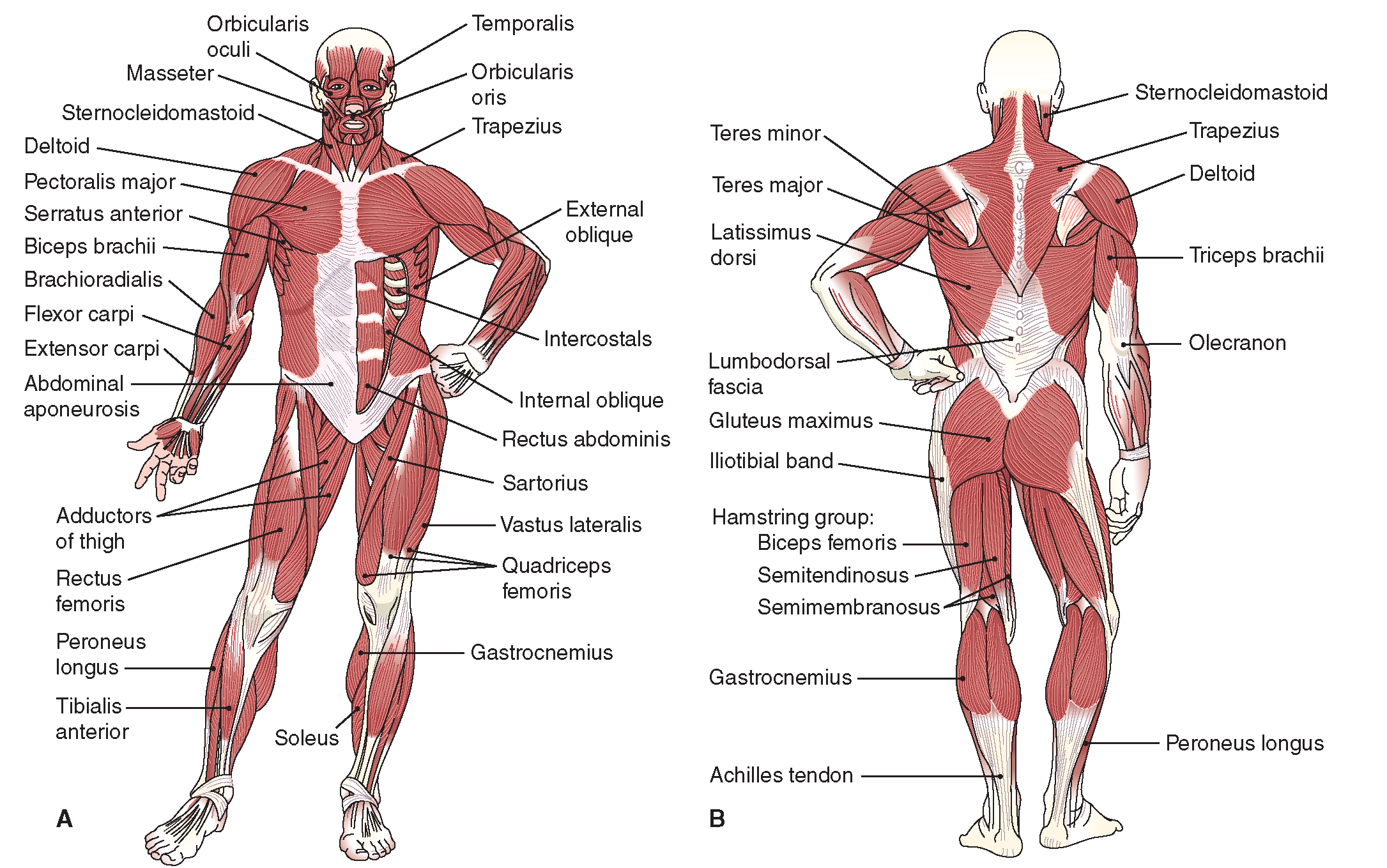
The Musculoskeletal System (Structure and Function) (Nursing) Part 4
How to Do It. Stand upright with a close stance, holding a barbell loosely against your thighs with a close, overhand grip. Hinge at your hips; unlock your knees and push your butt backwards. Tip.

Anatomy of back muscles Diagram Quizlet
This muscular system diagram shows the major muscle groups from the back or posterior view. To see a muscular system picture from the anterior (front) view click here. Occipitalis. Semispinalis Capitis. Splenius Capitis.

The Superficial Back Muscles Attachments Actions TeachMeAnatomy
The back is the body region between the neck and the gluteal regions. It comprises the vertebral column (spine) and two compartments of back muscles; extrinsic and intrinsic. The back functions are many, such as to house and protect the spinal cord, hold the body and head upright, and adjust the movements of the upper and lower limbs.

Muscle Facts Human Back Muscles DK Find Out
Summary. The back consists of the spine, spinal cord, muscles, ligaments, and nerves. These structures work together to support the body, enable a range of movements, and send messages from the.

Muscle Anatomy Posterior Human Anatomy Muscles Of The Back Muscular System Posterior View
ISSN 2534-5079. This human anatomy module is composed of diagrams, illustrations and 3D views of the back, cervical, thoracic and lumbar spinal areas as well as the various vertebrae. It contains the osteology, arthrology and myology of the spine and back. It is particularly interesting for physiotherapists, osteopaths, rheumatologists.

Superficial Back Muscles, 3 layers Diagram Quizlet
The muscles of the back are a group of strong, paired muscles that lie on the posterior aspect of the trunk. They provide movements of the spine, stability to the trunk, as well as the coordination between the movements of the limbs and trunk. The extrinsic (superficial) back muscles, which lie most superficially on the back.
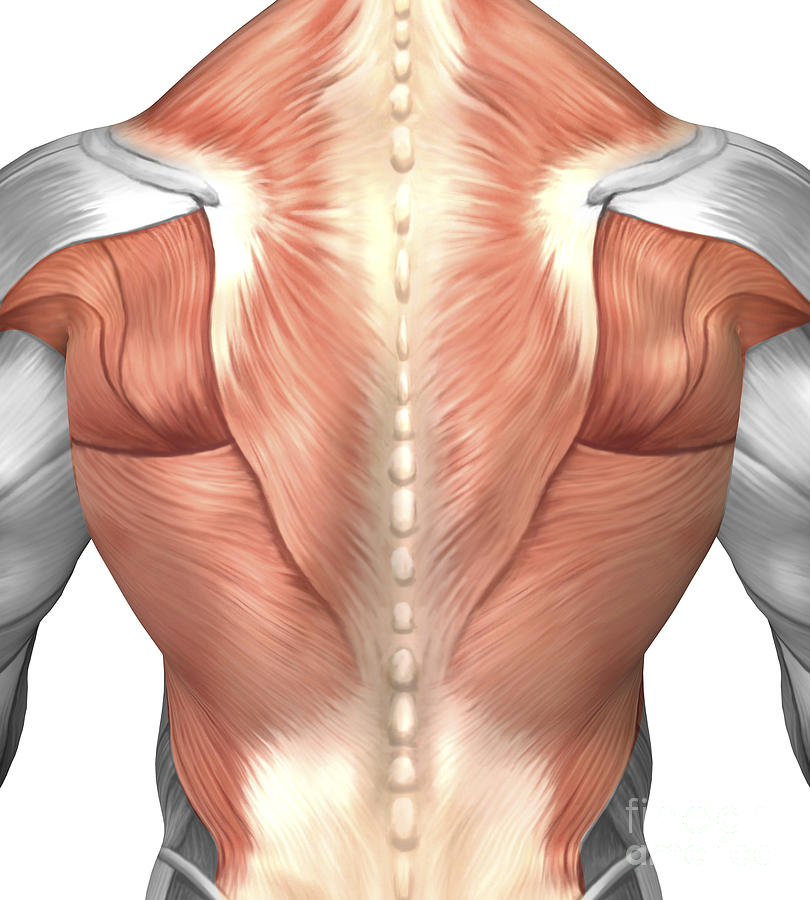
Male Muscle Anatomy Of The Human Back Digital Art by Stocktrek Images Pixels
This video provides an overview of the muscles of the back (superficial, intermediate and deep) using high-quality 3D anatomy models and expert narration fro.
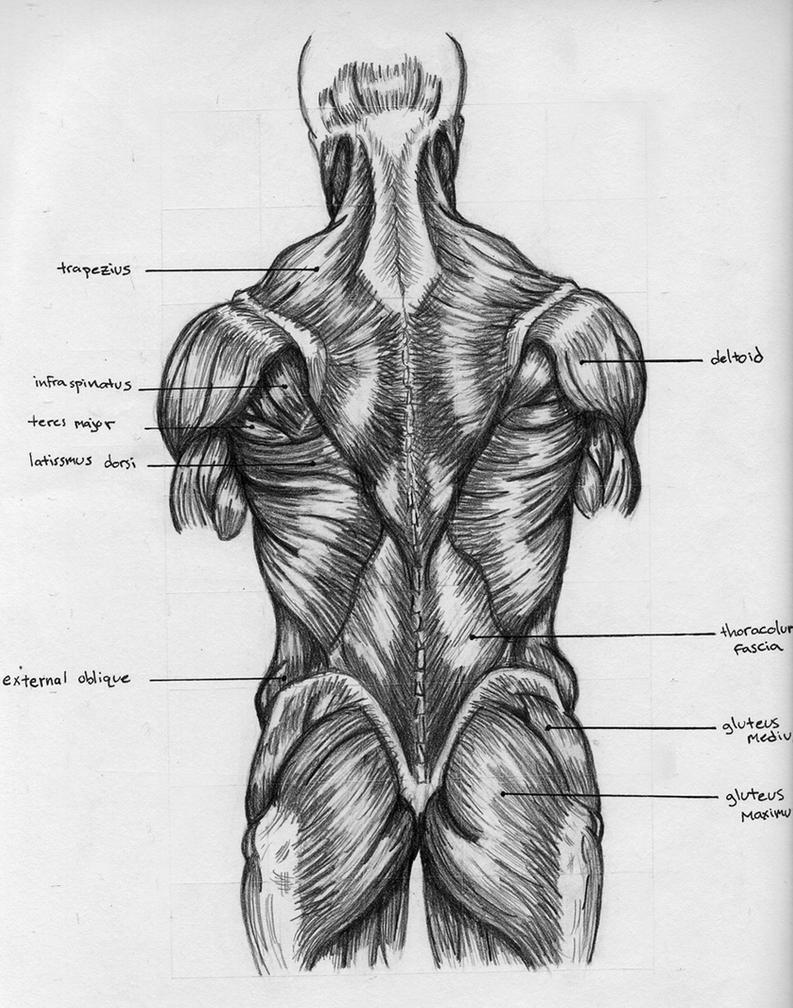
Back Muscles Chart by BadFish81 on DeviantArt
The muscles of the back categorize into three groups. The intrinsic or deep muscles are those muscles that fuse with the vertebral column. The second group is the superficial muscles, which help with shoulder and neck movements. The final group is the intermediate muscles, which help with the movement of the thoracic cage. Only the intrinsic muscles are considered true back muscles.
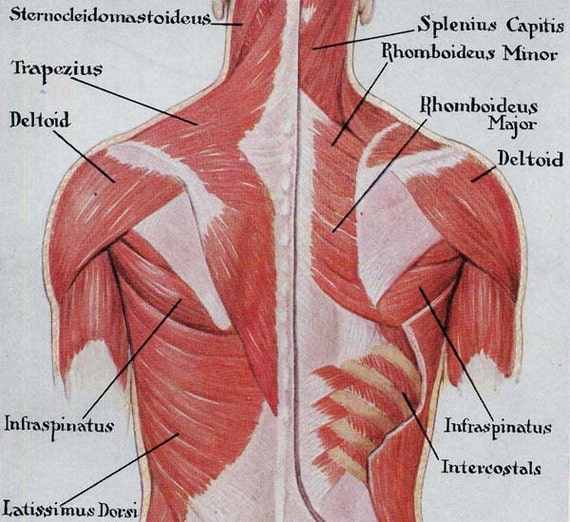
Muscles Back Posterior Human Anatomy Vintage Medical Chart
The muscles of the back can be arranged into 3 categories based on their location: superficial back muscles, intermediate back muscles and intrinsic back muscles.The intrinsic muscles are named as such because their embryological development begins in the back, oppose to the superficial and intermediate back muscles which develop elsewhere and are therefore classed as extrinsic muscles.

Muscles Diagrams Diagram of muscles and anatomy charts HubPages
Browse Getty Images' premium collection of high-quality, authentic Human Anatomy Organs Back View stock photos, royalty-free images, and pictures. Human Anatomy Organs Back View stock photos are available in a variety of sizes and formats to fit your needs.. engraving human body with muscles 1851 - human anatomy organs back view stock.
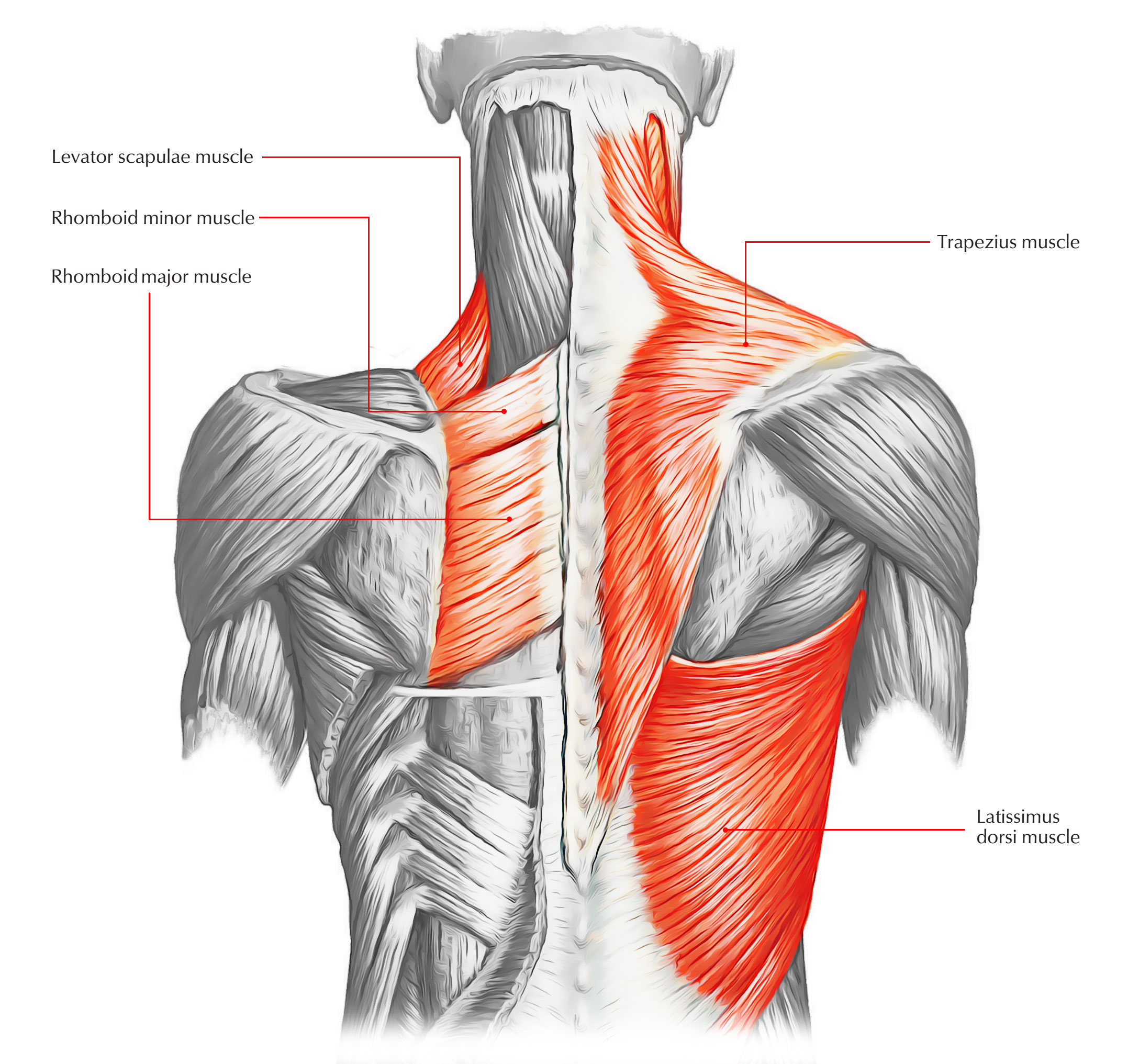
88+ Muscles Of The Back l2sanpiero
Latissimus dorsi (lats), the largest muscle in the upper part of your body. It starts below your shoulder blades and extends to your spine in the lower part of your back. Levator scapulae, a smaller muscle that starts at the side of your neck and extends to the scapula (shoulder blade). Rhomboids, two muscles that connect the scapula to the spine.

Beautiful illustration of the deep and superficial musculature of the back. This anatomical
The human back, also called the dorsum (pl.: dorsa), is the large posterior area of the human body, rising from the top of the buttocks to the back of the neck. It is the surface of the body opposite from the chest and the abdomen.The vertebral column runs the length of the back and creates a central area of recession. The breadth of the back is created by the shoulders at the top and the.

bodyman Full back muscles
The back is a key topographical region of the body, with crucial importance for posture, locomotion, and upper and lower limb movements. [1] The spine, located in the midline, divides the body into unequal anterior and posterior segments. In the posterior segment, the body area between the neck and gluteal regions is defined as the back region.

Muscle chart back Body Muscle Anatomy, Human Body Anatomy, Human Anatomy And Physiology, Anatomy
Your back consists of a complex array of bones, discs, nerves, joints, and muscles. The muscles of your back support your spine, attach your pelvis and shoulders to your trunk, and provide mobility and stability to your trunk and spine. The anatomy of your back muscles can be complex. There are several different layers of muscles in your back.

Back Muscle Diagrams 101 Diagrams
Latissimus dorsi. The latissimus dorsi is a large muscle band that lies along the flank areas of the body. It originates on the lower thoracic and lumbar vertebrae, and attaches to the scapula, humerus, and iliac crest. In addition to internal rotation and adduction of the arm, the latissimus dorsi can also assist with breathing.

Lower Back Muscle Diagram / Lower Back Muscles Hurt Increasing Blood Flow To Reduce The
The back comprises the dorsal part of the neck and the torso (dorsal body cavity) from the occipital bone to the top of the tailbone.The muscles of the back can be divided in three main groups according to their anatomical position and function. The superficial muscles participate in the movements of the upper limb, the intermediate muscles support the respiratory function, and the deep.